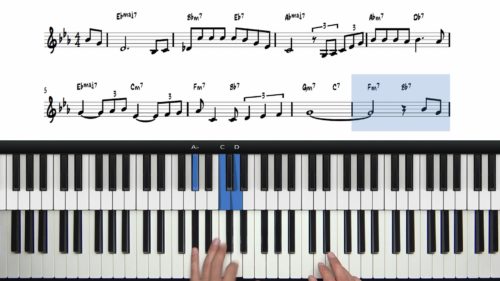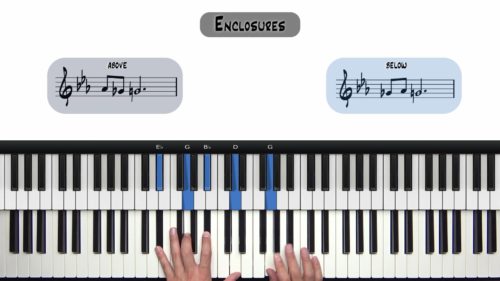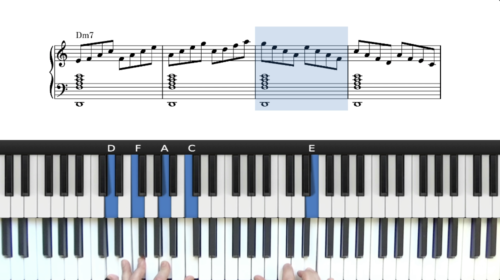Chord Tone Soloing
In this lesson we expand upon the previous concepts of targeting the 3rd and 7th of each chord. We now introduce some of the other primary chord tones by connecting the 3rds and 7ths with the basic arpeggios of each chord including the root, 3rd, 5th, and 7th.
Arpeggios & Approach Patterns
When playing with just the primary chord tones, it’s always possible to connect these together using the approach patterns that we covered in the previous lesson which include:
- the diatonic approach
- the chromatic approach
- the enclosure
This is the next step in the improvisation puzzle because now we are moving away from just targeting cord tones and we’re also incorporating arpeggio patterns to create longer improvised phrases directly within the harmony.
Lesson Downloads
-
Chord Tone Soloing Examples File Type: pdf
Practice Tips
-
Play slowly through the A section and identify the 'arpeggio pathways' that you can use to connect the approach patterns into the 3rds and 7ths of each chord.
-
In addition to studying the exact examples that I demonstrate, it's important that you are experimenting and discovering different pathways to connect the chords. There are a potentially infinite number of variations.
-
At this stage our improvisation will still sound like a drill or an exercise because we are improvising within a very limited framework.
-
Remember that the primary chord tones play a fundamental role in improvised jazz language. In the next lesson we introduce more dissonant tones that can be used to add tension and interest to our lines.








